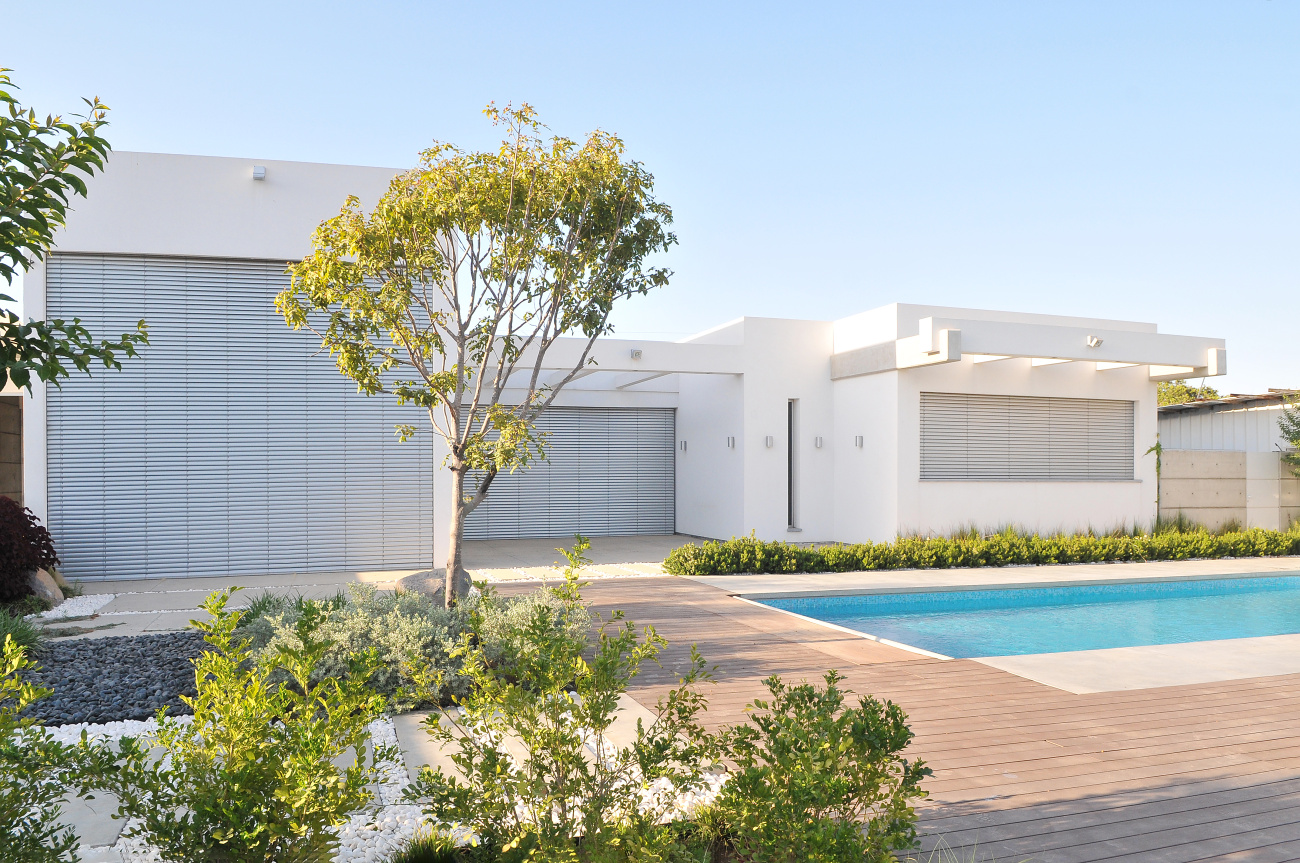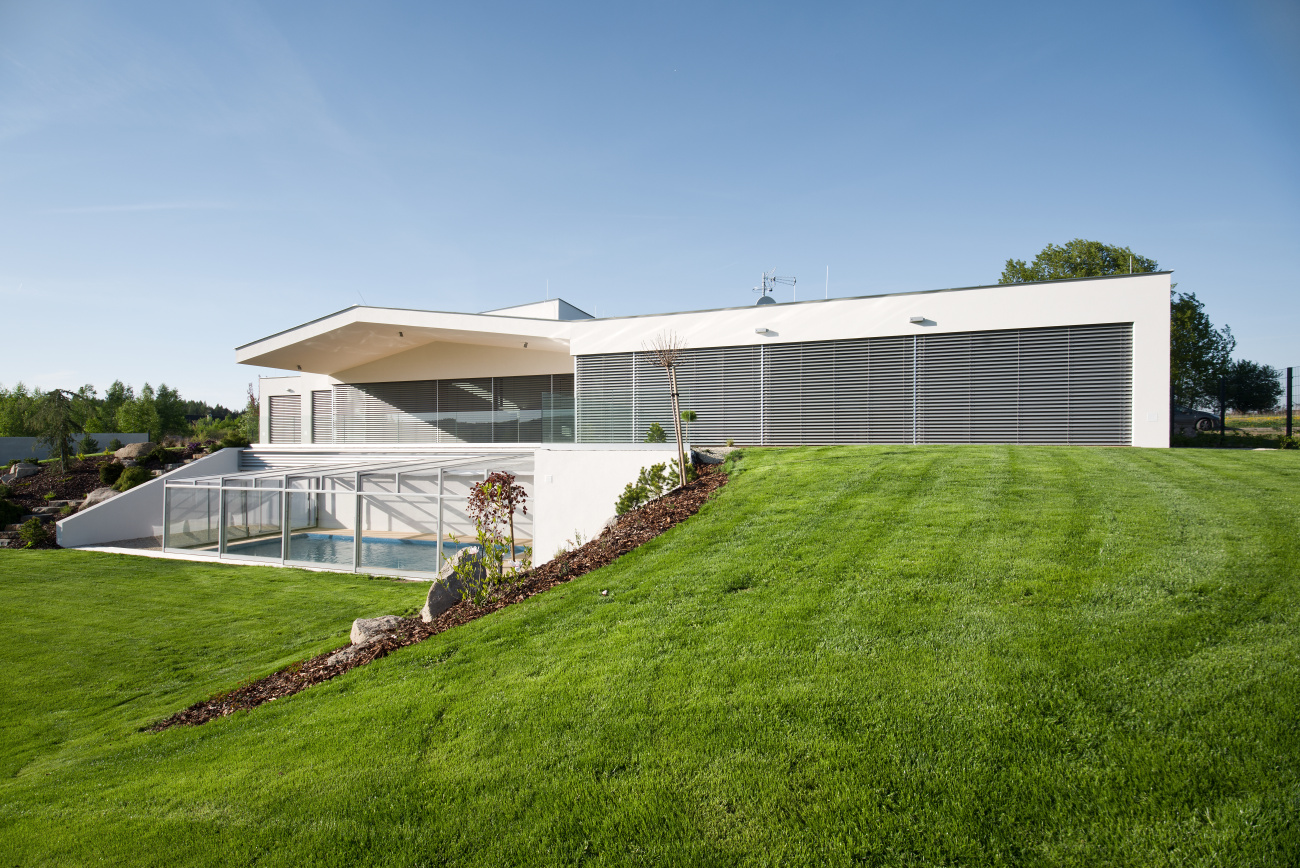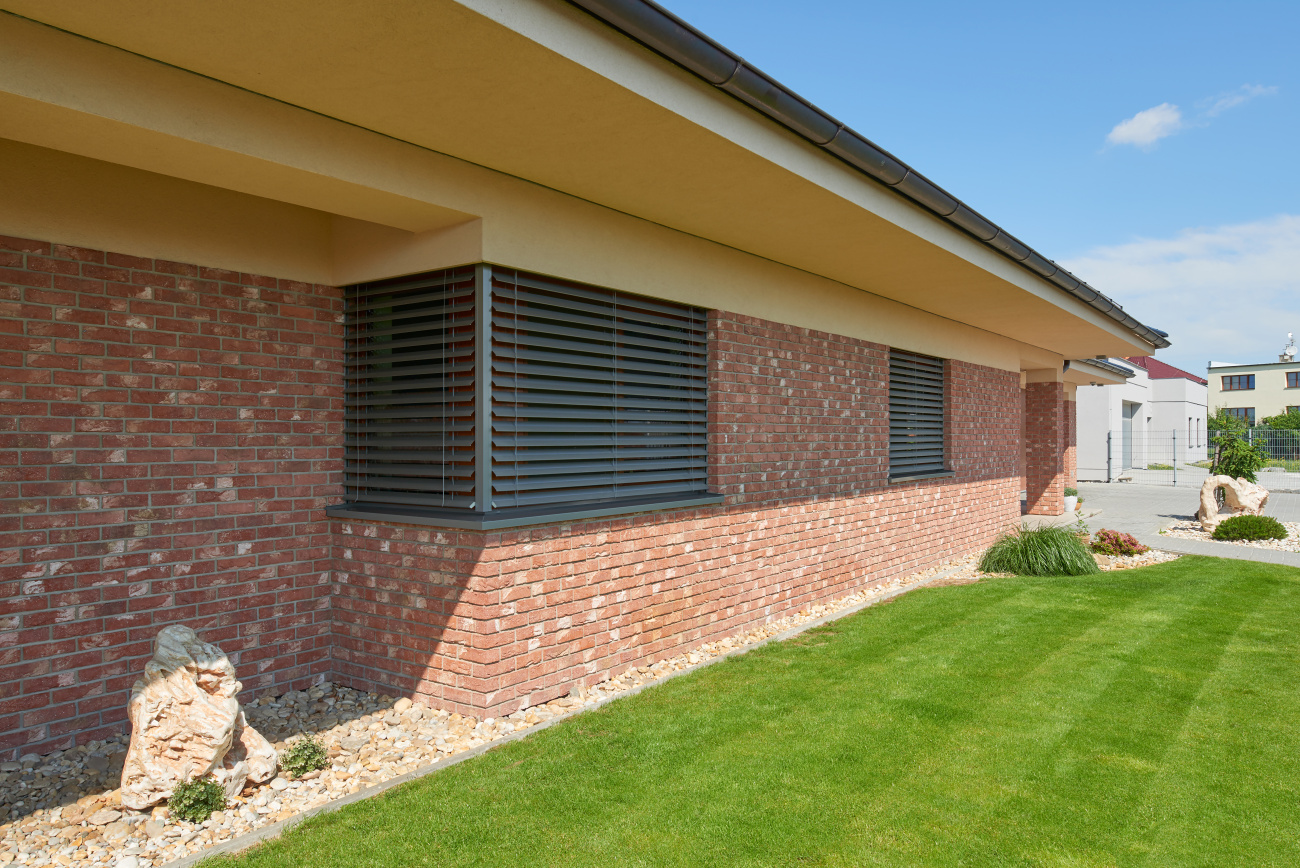
What color for outdoor blinds? Lighter shades are more practical
 |
The best-selling colors of outdoor blinds, according to NEVA - a leading Czech manufacturer of blinds – are silver, dark gray, silver-gray, bronze, and white. Customers and architects tend to choose neutral and lighter colors, which are more practical to maintain and additionally cool the interior better in the summer. Read on to find out what else influences the choice of color for outdoor blinds.
Light reflects heat, dark absorbs it
One of the greatest advantages of outdoor blinds is that they capture and reflect solar energy before it even enters the interior. As a result, they cool the room much more than, for example, indoor blinds – according to customer experiences, they can reduce the temperature in the room by up to 10 °C.However, it is important what color you choose for your outdoor blinds. While light shades reflect light and let only about 4-6 % of solar energy inside, darker ones absorb it and allow over 14 % of energy to pass through. This is based on data from the Association of Manufacturers of Shading Technology and its components from 2017.
The thermal comfort in the house is influenced not only by the blinds but also by the quality of the windows or the insulation of the facade.
 |
| Outdoor blinds in light color well reflect light and pleasantly cool the interior. |
Neutral colors are the most popular
Czech manufacturer of outdoor blinds NEVA produces about 80,000 pieces of blinds annually, two-thirds of its orders consist of blinds in silver and gray colors. Neutral colors correspond to the trends of modern architecture and architects most often recommend them to their clients."You can't go wrong with shades of gray; we also recommend colors close to the window frames. When the blinds are pulled down, there is a large area, so we rather do not recommend white, as it shines a lot. Similarly, we wouldn’t choose blinds in bright colors - such as blue, green, or red," confirms this trend architect Vlado Hrivňák from No-A Architects.
Light and neutral colors are also more practical
Customers appreciate light shades of gray or silver as they are the easiest to maintain. Dust and pollen are very visible on white, colored, or dark slats, and homeowners near roads or trees have to clean them more often."The surface of the slats also affects the retention of dirt. A structured finish - so-called structure lacquer - with polyurethane and polyamide content is suitable. Such blinds gather less dust, and we manufacture them the most frequently. If you want to make maintenance even easier, opt for the MecoProtect® surface treatment. This type of lacquer contains nanoparticles and becomes extremely hydrophilic (attracts water) after activation by UV light. Washing the blinds requires only a small amount of water, which also spreads evenly over the slats' surface and dries very quickly without leaving water spots," adds Jan Gajdoš, product specialist at NEVA.
 |
| Neutral colors of blinds are the most practical. |
Where do darker and more vibrant colors fit?
Colored slats of blinds are suitable, for example, for children's buildings – schools, kindergartens, or after-school care centers. They can also be used in company headquarters if the company aligns the facade with corporate colors.Darker shades like dark gray or black convey a luxurious feel and can be used in houses in cooler regions or with north orientation, where absorbing solar energy is desirable.
For more information and tips from the world of shading, follow the NEVA company blog.
The English translation is powered by AI tool. Switch to Czech to view the original text source.
0 comments
add comment
Related articles
0
18.04.2021 | How does the method of installing outdoor blinds influence the appearance of the house?
0
13.02.2021 | How to design a well-cooled house even without air conditioning
0
19.11.2020 | In Malmö, a new hospital complex has been inaugurated. It considers the health of patients as well as the environment
0
02.11.2020 | Aluminum vs. wooden outdoor blinds: aluminum is more durable, while wood feels warmer
0
12.10.2020 | How do the world's sides affect the layout design of an apartment?
0
04.08.2020 | Z, S or C? How to choose the shape of the slat for outdoor blinds according to the type of house or window
0
25.05.2020 | Expert advises: how to overshadow architecturally exceptional buildings
0
24.04.2020 | In the selection of blinds, the material of the facade, the shape of the house, and the connection with the interior are decisive, says architect Lánský
0
25.03.2020 | In the shadowing market, outdoor blinds dominate. The most popular are silver ones.











